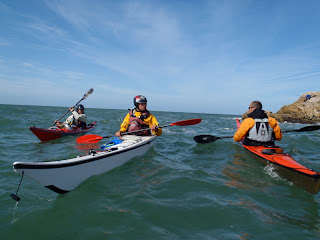An inuksuk is a stone monument found throughout the arctic regions of Canada, Greenland and Alaska. The singular of inuksuit, it means "in the likeness of a human". Hence why many of the stone cairns that have been erected often assume the shape of a person. Created hundreds of years ago, an "ee-nook-shook" can take different forms, each with unique cultural significance and purpose. They are often used to mark special places and a familiar inuksuk is a welcome guide to a traveler in a featureless and forbidding landscape.
Still being erected today, inuksuit are lasting symbols of resilience in a harsh, often unforgiving environment and have evolved into a distinctive art form. These sculptural representations are seen as among the most important objects placed by humans in the vast Arctic landscape. As a consequence, they have become a familiar symbol of the Inuit and of their homeland. Inuit tradition forbids the destruction of inuksuit as they are frequently venerated as symbolizing an ancestor who knew how to survive on the land in the traditional way.
In this way, inuksuit come to serve many purposes, both practical and mystical. An inuksuk can serve in a spiritual capacity to indicate where life is renewed. where spirits reside, where judgements or decisions are made, and where celebrations are held. They come to symbolise places of death and remembrance also. Inuksuit can also be signposts for safe or dangerous crossings, treacherous water, falling rocks, caribou crossings, good hunting and fishing locations. Amongst other things, they have become an enduring means of communication by the Inuit people through the generations that have been, and are yet to be.
So compelling was the desire of the Inuit to create inuksuit, that they not only appear on the earthly landscape but also in legend and stories - as figures that emerge from the movement of fingers playing string game or in a winter sky constellation. Some of the 'old' inuksuit are mentioned in the travelling songs passed from generation to generation in order to help hunters remember a series of directions on long trips. Often these inuksuit are venerted regardless of their function. Even today, the appearance of a familiar inuksuk on the horizon is a welcome sight when one is a long way from home.
Whether they symbolise their maker, act in a practical capacity or are the object of reverence, inuksuit function as helper and messengers created by an infinite arrangement of stones. They are an integral part of life outdoors, as an unspoken language and endure as indelible signatures upon the landscape.


.jpg)














.jpg)





.jpg)













